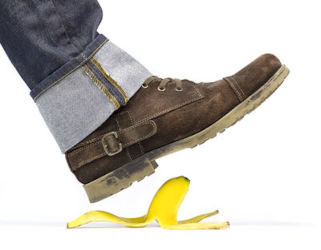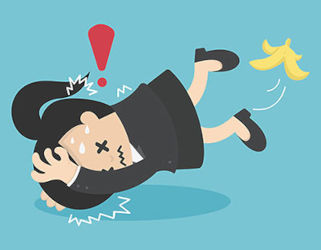Court Goes Bananas Over Evidence
Ever been rear-ended? How about slipped on a banana peel? If there are damages, attorneys get involved and liability is determined based on the principles of Tort law. Torts is one of the subjects first-year students at GUCL study. It is tested on the CA Bar Exam and is a prolific practice area for attorneys. Torts matter! Here’s what Torts are about:
 What is a Tort? A Tort is an act or omission that gives rise to injury or harm to another and amounts to a civil wrong for which courts impose liability. Torts fall into three general categories: intentional, negligent, or strict liability. The primary aims of Tort law are to provide relief to injured parties for harms caused by others, to impose liability on parties responsible for the harm, and to deter others from committing harmful acts. Now, try applying these concepts to the case below:
What is a Tort? A Tort is an act or omission that gives rise to injury or harm to another and amounts to a civil wrong for which courts impose liability. Torts fall into three general categories: intentional, negligent, or strict liability. The primary aims of Tort law are to provide relief to injured parties for harms caused by others, to impose liability on parties responsible for the harm, and to deter others from committing harmful acts. Now, try applying these concepts to the case below:
Famous Torts Case: People really do slip on banana peels! In this infamous case, key evidence in determining negligence was the condition of the banana peel.
 Anjou v. Boston Elevated Railway Co. (1911) 94 N.E. 386
- Ms. Anjou was walking in a railroad terminal towards her train and slipped on a banana peel. She sued the railroad for negligence. The court considered whether the railroad company had breached its duty to maintain a safe platform. Witnesses testified the peel was “black, flattened out, and gritty.” The court found that the defendant breached its duty to maintain a safe platform by allowing the peel to remain on the ground for too long. Ms. Anjou won her case and was awarded $1,250 - big bucks in 1911!
Anjou v. Boston Elevated Railway Co. (1911) 94 N.E. 386
- Ms. Anjou was walking in a railroad terminal towards her train and slipped on a banana peel. She sued the railroad for negligence. The court considered whether the railroad company had breached its duty to maintain a safe platform. Witnesses testified the peel was “black, flattened out, and gritty.” The court found that the defendant breached its duty to maintain a safe platform by allowing the peel to remain on the ground for too long. Ms. Anjou won her case and was awarded $1,250 - big bucks in 1911!
